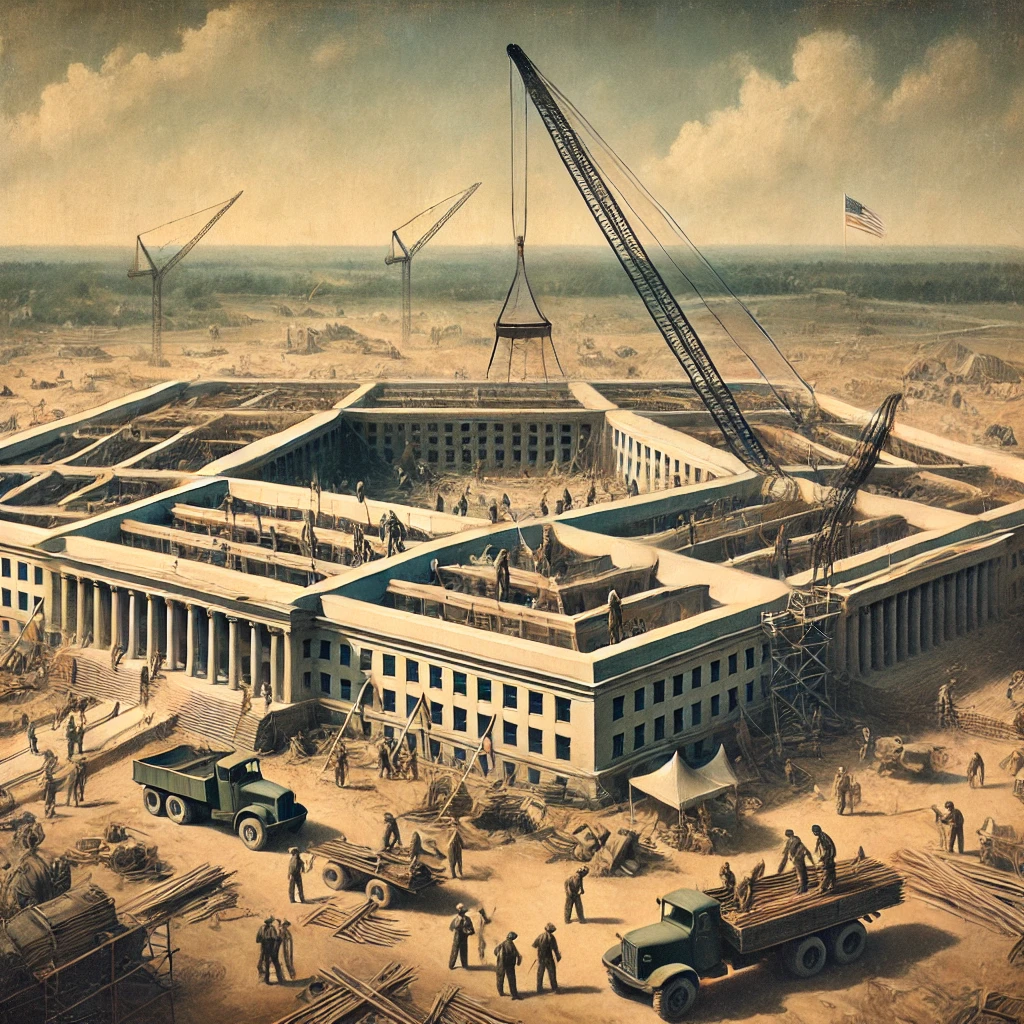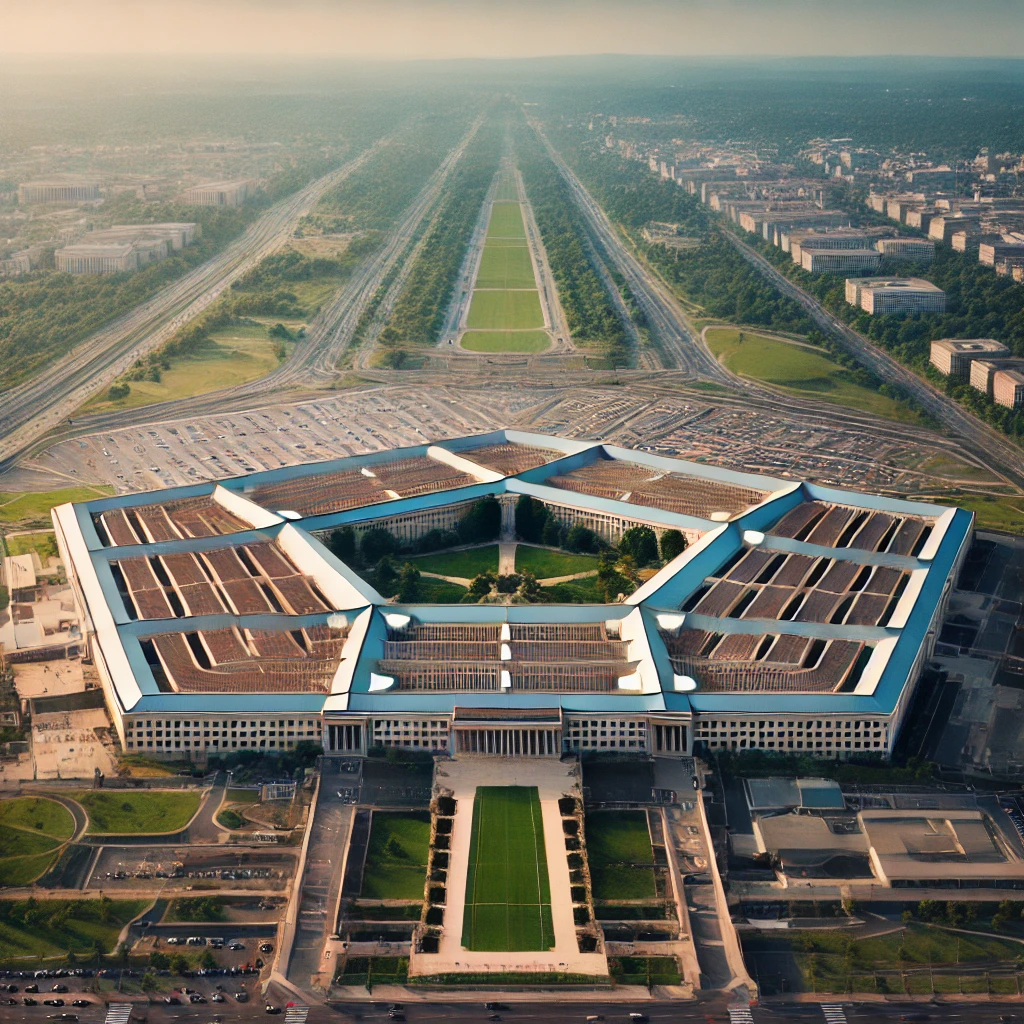On September 11, 1941, the construction of the Pentagon, one of the world’s largest office buildings, commenced in Arlington County, Virginia. As the headquarters of the United States Department of Defense, the Pentagon’s creation was driven by the urgent needs of World War II and the necessity for a centralized military command structure. The Pentagon quickly became a building of architectural significance in its role in shaping U.S. defense strategy.
Historical Context and Need
The early 1940s were a time of significant upheaval and change, particularly for the United States, which had just entered World War II. The rapid escalation of the war effort necessitated a more organized and streamlined approach to military operations. Prior to the Pentagon’s construction, the War Department’s various branches were scattered across multiple buildings in Washington, D.C. This dispersed arrangement proved inefficient and cumbersome, particularly as the U.S. military sought to coordinate complex and far-reaching operations across multiple theaters of war.
The need for a centralized military headquarters became increasingly apparent as the war effort intensified. In July 1941, Secretary of War Henry Stimson and Army Chief of Staff General George C. Marshall advocated for the construction of a new building that would consolidate military operations and improve coordination. The Pentagon was conceived as a solution to this pressing problem, with its design reflecting both the urgency and scale of the wartime demands.

Design and Construction
Designed by architect George Bergstrom and structural engineer John McShain, the Pentagon’s construction began with remarkable speed. The building’s distinctive five-sided shape, from which it derives its name, was chosen for its efficiency in accommodating the large number of offices required. The design was driven by both functional needs and practical considerations, including the need to maximize office space while minimizing construction costs and time.
The Pentagon’s construction was one of the largest and fastest building projects of its time. The foundation work began in September 1941, and the building was officially completed in January 1943, just 16 months later. This rapid construction was a testament to the coordination and dedication of thousands of workers who labored around the clock to meet the wartime demands. The building’s sheer size and innovative design were critical in establishing it as a symbol of American military power and efficiency.
Architectural Significance
The Pentagon’s design is notable not only for its scale but also for its architectural innovations. The building features five concentric rings connected by a series of radiating corridors, creating a structure that is both functional and efficient. This design allowed for the accommodation of over 28,000 employees within a relatively compact footprint. The Pentagon’s use of reinforced concrete and steel, coupled with its modular construction techniques, enabled its rapid completion and durability.
The building’s five-sided shape, while initially chosen for practical reasons, has since become an iconic symbol of American military strength. The Pentagon’s design reflects both the pragmatic needs of wartime logistics and the aesthetic considerations of a building intended to represent the power and resolve of the United States. Its distinctive appearance has made it one of the most recognizable landmarks in the world.

The Pentagon’s Role in U.S. Defense
Since its completion, the Pentagon has played a crucial role in the administration and coordination of U.S. military operations. As the headquarters of the Department of Defense, it serves as the central hub for military planning, strategy, and policy-making. The Pentagon’s strategic location and comprehensive design facilitate effective communication and coordination across the various branches of the U.S. military.
The Pentagon’s role has evolved significantly since its construction, adapting to the changing nature of warfare and defense needs. During the Cold War, it was the epicenter of military strategy and planning against the Soviet Union. In recent decades, it has been instrumental in coordinating U.S. military responses to conflicts such as those in Iraq and Afghanistan. The Pentagon’s significance extends beyond its physical structure, embodying the broader goals and strategies of U.S. defense policy.
The Pentagon’s Legacy
The legacy of the Pentagon is reflected in its continued importance as a symbol of American military power and organizational efficiency. Its construction marked a pivotal moment in U.S. history, addressing the immediate needs of World War II while setting the stage for future military coordination and strategy. The building’s design and rapid construction exemplify the capacity of American ingenuity and resourcefulness during a time of crisis.
The Pentagon’s impact extends beyond its role as a military headquarters. It has become a symbol of resilience and strength, particularly in the wake of the September 11, 2001 terrorist attacks, which targeted the Pentagon itself. The building’s ability to recover and continue functioning despite significant damage underscored its symbolic and practical importance to the U.S. military and the nation as a whole.

Conclusion
The construction of the Pentagon was driven by the urgent needs of World War II and the necessity for a centralized military command structure. Its rapid construction and innovative design reflect the demands of a wartime economy and the vision of its architects and builders. Today, the Pentagon stands as a testament to American military strength and organizational efficiency, continuing to play a central role in the nation’s defense strategy and symbolizing the enduring resolve and capability of the United States.
